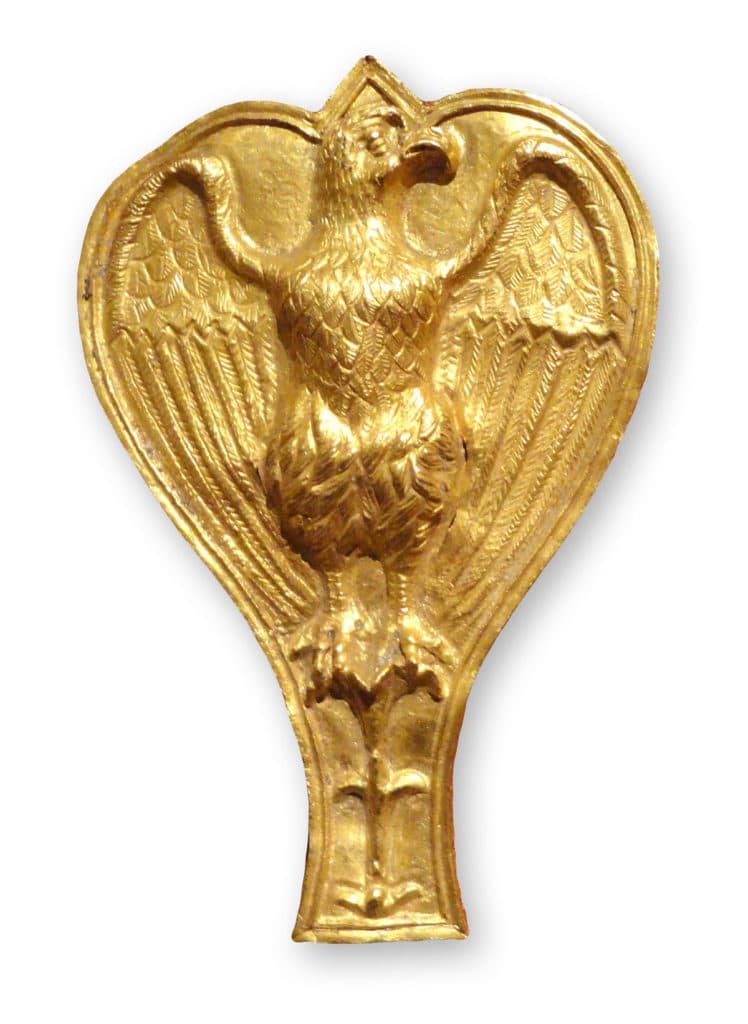Nothing in military history quite matches the Roman standards. Perhaps the closest equivalent is the regimental colors in contemporary armies.
The Roman standards, the signa were a recognition signal and a rallying point within the chaos of a battlefield.
The various units of a Roman army required a device to recognize, watch, and follow in the heat of battle. For this, it was highly important that they recognized their own at a glance.
But much more than a mere means of identification, the Roman standards were held in awe. Roman standards were potent symbols of Roman honor. Not merely did they represent the honor of the unit, as with later regimental colors, but they represented the honor of Rome herself.
One of the reasons for the Roman campaign in Germany following the defeat of Varus in the Teutoburger Wald was for the army to recover the lost Roman standards of the defeated legions. Emperor Augustus also threatened war against Persia to ensure the standards last at Carrhae by Crassus were returned.
The standards were also of importance in the pitching and striking camp. The first act of setting up camp was to stake the standards into the ground. The standards were afforded their own tent at the very heart of the camp itself, next to the tent of the commanding officer. When striking camps the standards were drawn from the ground. For the standards to remain stuck fast within the earth was deemed a serious omen and the soldiers, ever superstitious, might even refuse their orders to move, lest they offend the will of the gods.
The standards also played key roles at religious festivals. On these occasions, they would be anointed with precious oils and decorated with garlands. So revered were the standards during such ceremonies, that it might be argued the standards themselves were worshipped by the troops.
Caesar often referred to troops as ante and post signani; in front of and behind the standards. Given that the basic signum standard was for each maniple that consisted of two centuries, this suggests the standard tended to be kept between the two, the rear century commanded by the posterior centurion and the front century by the prior centurion. Though clearly, this is more of a rough guide, than a firm principle.
In the African Wars, as the troops became disorganized, the order was given that no man should venture more than four feet beyond the standards. This illustrates beautifully how the men were expected to orientate themselves by their standards, but it also suggests that, in this case, the standards seem to have been situated very close to the front line.
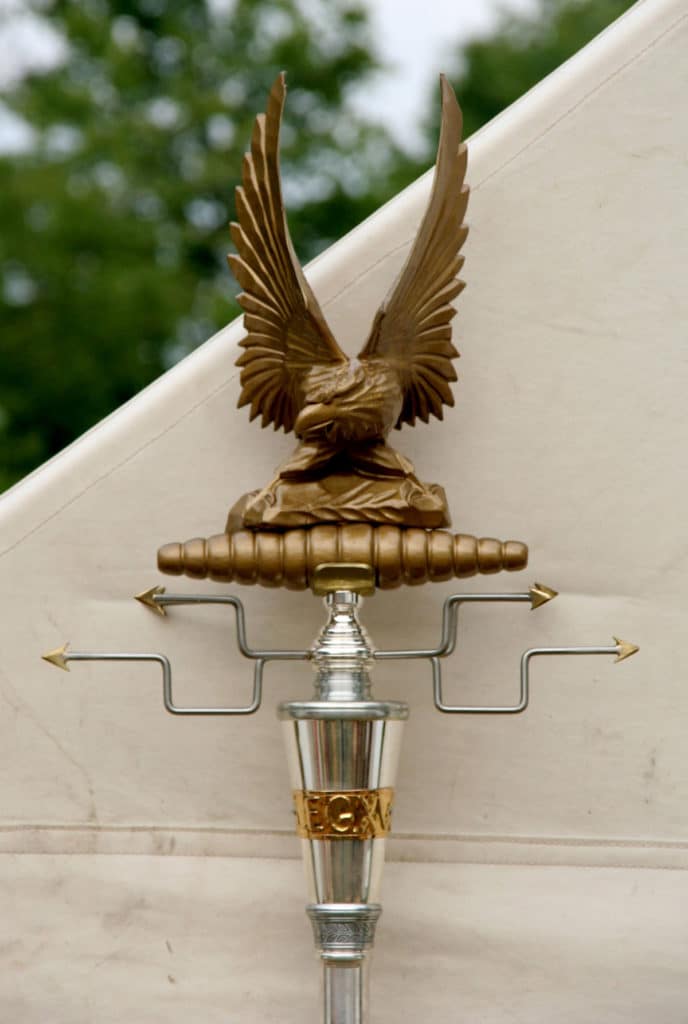
One of the reasons the men paid the standards so much attention when in battle was that they acted as signaling posts. Simple commands were relayed in tandem through the trumpeters, the cornices, and the standard bearers. A blast from the trumpet (cornu) would draw attention to the standard. A number of pre-arranged command signals, such as up and down movements or swaying motions, then visually relayed the order to the ranks.
It appears that standards bearing various animals were used by the legions from the earliest times and that they gradually became standardized.
Pliny the Elder suggests the republican army bore five different animal standards, the eagle, the wolf, the minotaur, the horse, and the boar.
Marius later made the eagle (Aquila) the supreme symbol because of its association with the god Jupiter. The other symbols were subsequently either relegated to a lesser role or abolished altogether.
In late republican times, the eagle standard was most likely silver and a golden thunderbolt was held in the claws of the eagle, but later it was entirely golden. It seems fair to assume though that the above suggests that the eagle was fairly small.
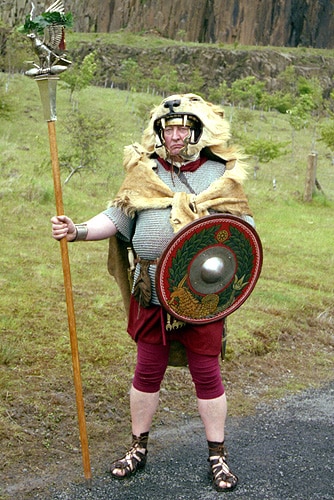
Aquilifer (1st Century AD)
A first-century aqulifer. His armor and helmet are covered in lion skin and he also carries a small circular shield.
The aquilifer takes his name from the type of standard he carries, the Aquila (the ‘eagle’). The Aquila was the standard of the legion. It was the item that had to be defended at all costs, as it represented the legion’s honor.
Bearing the legion’s most prized possession the aquilifer’s position was of high standing. In fact, one of the aquilifer’s duties was to be in charge of the legion’s pay chest. He would therefore also be the man to whom the legionaries and officers would entrust their savings.
Else, if the eagle atop the standard was rather large, as some seem to suggest, we must assume the animal to have been gilded, as opposed to being of solid gold.
Whilst the eagle was the chief symbol of all legions after Marius, each unit still seemed to entertain several symbols of its own.
These symbols usually referred to the date of its foundation, its founder, or a particular commander under whom a great victory had been achieved.
Often therefore the symbols tended to be signs of the zodiac. The connections can be quite complicated.
For example, the goddess Venus was claimed as the mythological ancestor of the Julian family. The bull was held sacred in the worship of Venus. So a bull might denote an association with the Julians.
On the other hand, in the zodiac, the bull signifies the period 17th April to 18th May, so a connection might be possible with a date in that period.
1 more straightforward example is the use of the Capricorn by the Legio II Augusta, one of the British legions. The legion was founded by Emperor Augustus. The Capricorn was an emblem associated with him.
To complicate matters, however, the Legio II Augusta also bore symbols of Pegasus and Mars.
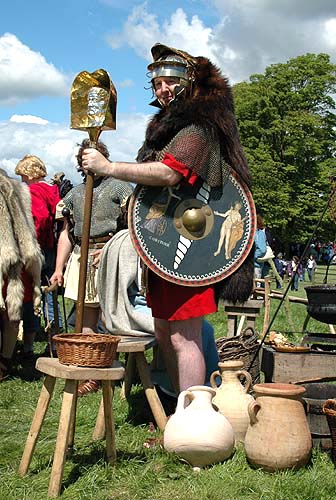
Imaginifer (1st Century AD)
A first-century imaginifier. His armour and helmet are covered in a bear skin and he also carries a small circular shield.
The imaginifer takes his name from the type of standard he carries, the Imago. The Imago was a standard bearing a depiction of the emperor. It was the emperor’s representation as the supreme commander among the troops; a potent reminder to whom the soldiers owed loyalty. No doubt it will have played a role in the annual ceremony of vowing allegiance to the emperor.
The Imago was a peculiar standard of political importance. It linked the legion with the emperor personally.
This standard, bearing the image of the emperor, was carried by the imaginifer. In later times it also may have included portraits of other members of the ruling house.
It is worth pointing out that the Aquila and the imago were in the care of the first cohort.
The maniple was a very ancient division of the legion, consisting of two centuries. This unit too had its own standard.
The hand (manus) at the top of this standard no doubt originally had significance, although it may not have been understood by the later Romans themselves. Military salute? Divine protection?
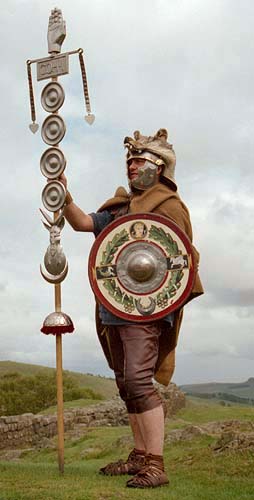
Signifer (1st Century AD)
A first-century signifer. His armor and helmet are covered in wolf skin and he also carries a small circular shield.
The signifer takes his name from the type of standard he carries, the signum. The signum was used as the standard for each maniple in the legion (a maniple consisted of two centuries).
The Romans were a people who maintained traditions, even once they had long fallen into obscurity and were no longer understood. So their own ignorance of the meanings behind such symbolism is well possible.
Below the hand was a crossbar from which could be hung wreaths or other decorations and attached to the staff, in vertical array, were various discs, bearing numbers.
The precise nature of these numbers is not understood but they may have been the numbers allocated to the unit to identify its cohort, maniple, or century. (e.g. 3rd cohort, 1st maniple, 2nd century)
The one standard that came close to resembling what we recognize as a flag today was the vexillum, a small square piece of cloth attached to a cross-bar carried on a pole.
This type of standard was in general use by the Roman cavalry, most likely as it was lighter and hence less of an encumbrance to the bearer.
The infantry however also made use of the vexillum. It was used for units detached from the main body of an army.
e.g. if a century or several contubernia were dispatched on a mission, they would carry their own vexillum, as a temporary standard.
The bearer of the vexillum standard, in both infantry and cavalry, was known as the vexillarius
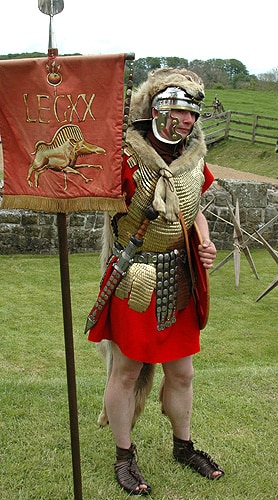
Vexillarius (1st Century AD)
A first-century vexillarius. His armour and helmet are covered in wolf skin and he would usually also carry a small circular shield.
The vexillarius takes his name from the type of standard he carries, the vexillum. The vexillum was used as the typical standard for cavalry or, as in this case, in the infantry for detachments of varying sizes. Such a detachment could be of any number of men and is known as a ‘vexillation’.
Their standard would signify which larger unit they would belong to, in this case, the 20th Legion.
Finally, it is worth noting that all standard bearers wore animal skins over their uniforms and helmets. This seemed to be a very ancient practice, derived from the Celts. The tribe of the Suebi for instance was said to have worn boar masks.
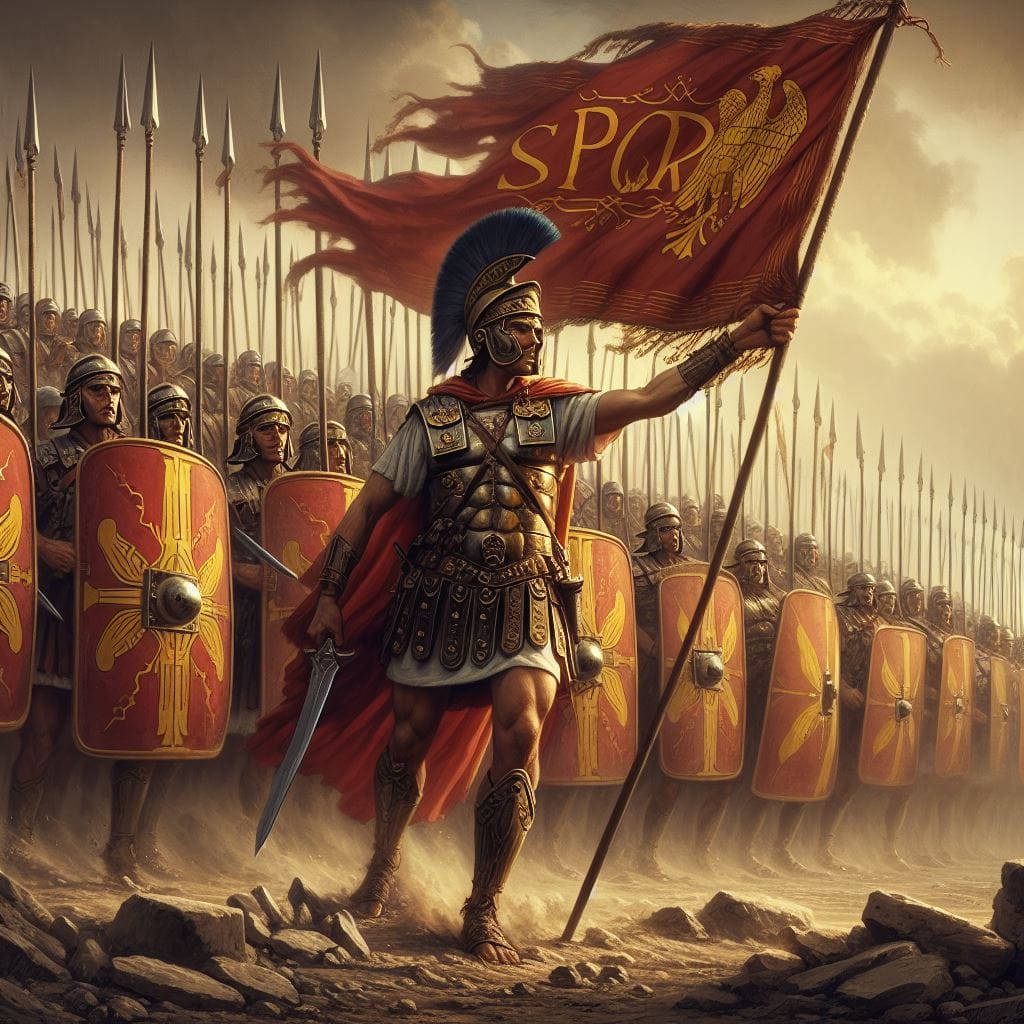
People Also Ask:
What were the Roman standards?
History. The signa militaria were the Roman military ensigns or Roman standards. The most ancient standard employed by the Romans is said to have been a handful (manipulus) of straw fixed to the top of a spear or pole. Hence the company of soldiers belonging to it was called a maniple.
What were Roman standards used for?
Roman standards (signum or signa Romanum) were banners attached to a spar that identified a Roman unit or cavalry. The banner played a very important role in the army. It was a meeting point, a symbol of pride, and allowed for organized movements on the battlefield.
How many Roman standards were lost?
Just in one battle. Arminius choreographed an elaborate plan by which the Roman legions would have to march through the Teutoburg Forest, where their tactics and training could little help them, and then ambushed them. The legions were massacred on the third day of their march and all three Roman Standards were lost.
How many Roman standards are there?
There were three main types of Roman standards (Aquila, Vexillum, Signum). Several Roman standards throughout its history include Aquila, the emblem of the Roman legion whose adoption of Pliny the Elder attributes to the general Gaius Marius.
What were Roman standards made of?
The most ancient Roman standards are said to have been a handful of straw fixed to the top of a spear or pole. Hence the company of soldiers, belonging to it, was called Manipulus. The bundle of hay or fern was soon succeeded by the figures of animals.

Historian Franco Cavazzi dedicated hundreds of hours of his life to creating this website, roman-empire.net as a trove of educational material on this fascinating period of history. His work has been cited in a number of textbooks on the Roman Empire and mentioned on numerous publications such as the New York Times, PBS, The Guardian, and many more.

